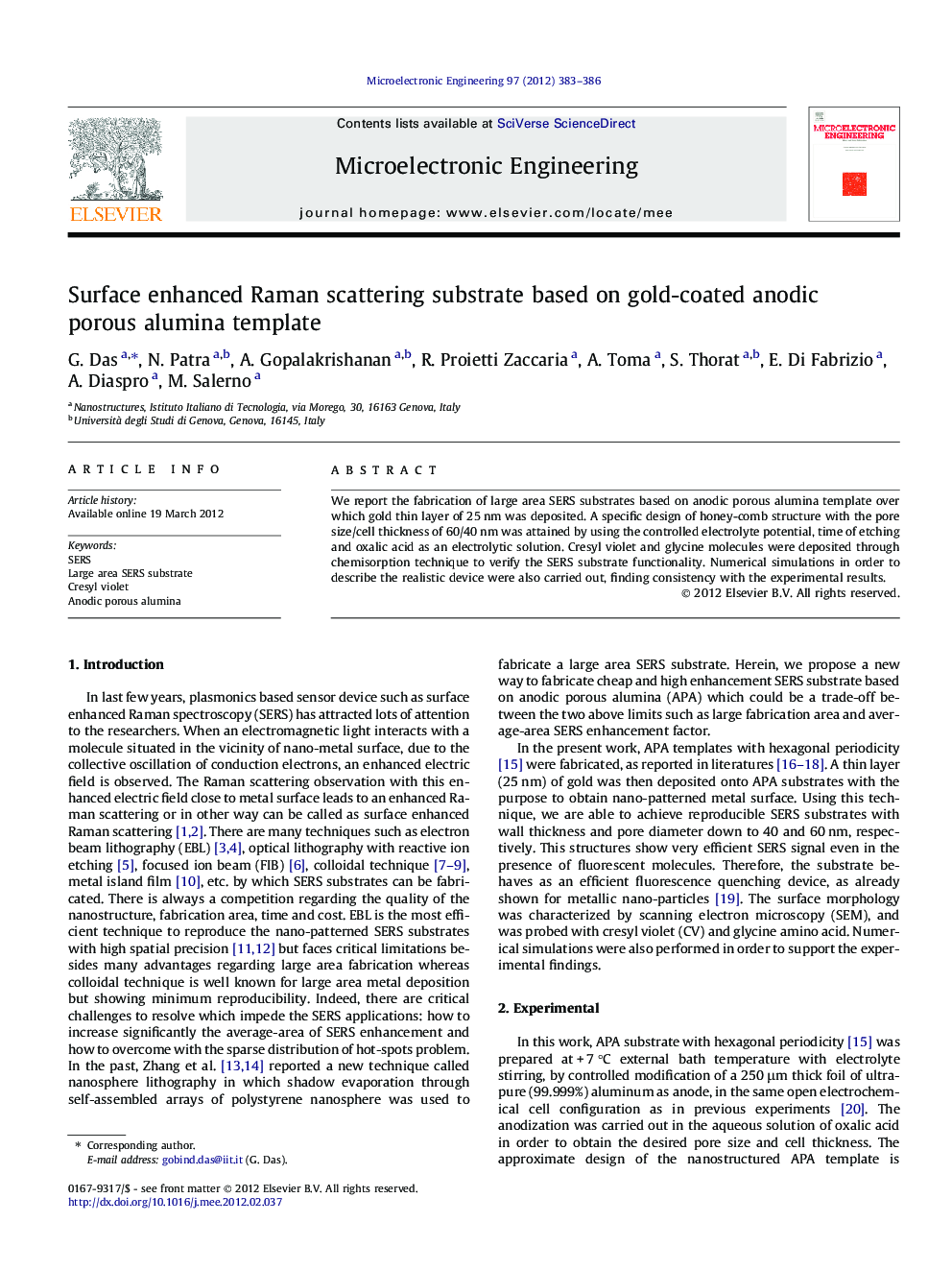| Article ID | Journal | Published Year | Pages | File Type |
|---|---|---|---|---|
| 544412 | Microelectronic Engineering | 2012 | 4 Pages |
We report the fabrication of large area SERS substrates based on anodic porous alumina template over which gold thin layer of 25 nm was deposited. A specific design of honey-comb structure with the pore size/cell thickness of 60/40 nm was attained by using the controlled electrolyte potential, time of etching and oxalic acid as an electrolytic solution. Cresyl violet and glycine molecules were deposited through chemisorption technique to verify the SERS substrate functionality. Numerical simulations in order to describe the realistic device were also carried out, finding consistency with the experimental results.
Graphical abstractWe propose a large area SERS substrate based on anodic porous alumina (APA) template over which gold thin layer of 25 nm was deposited. A specific design of honey-comb structure with the pore size/cell thickness of 60/40 nm was attained by using the controlled electrolyte potential, time of etching and oxalic acid as an electrolytic solution. Cresyl violet dye and glycine amino acid were deposited through chemisorption technique to analyze using SERS substrate. Enhancement factor is estimated to be around 104 and 7 × 106 with respect to flat Au surface and Si substrate, respectively. A mathematical simulation for the realistic honey-comb design was performed and was found consistency with the experimental results. Having low fabrication cost, high enhancement factor and device reproducibility, it could be perfect device for disposable SERS sensor. Honey-comb structure model (top) and the gold-coated APA substrate SEM image (bottom) are shown in Fig. 1.Figure optionsDownload full-size imageDownload as PowerPoint slideHighlights► Fabrication of reproducible SERS substrate based on APA template. ► Investigation of surface morphology using SEM before and after gold evaporation. ► SERS device verification for cresyl violet and glycine molecules, deposited using chemisorption technique. ► The enhancement factor is found to be 7 × 106. ► Possible application as a disposable sensor due to easy and inexpensive device fabrication.
